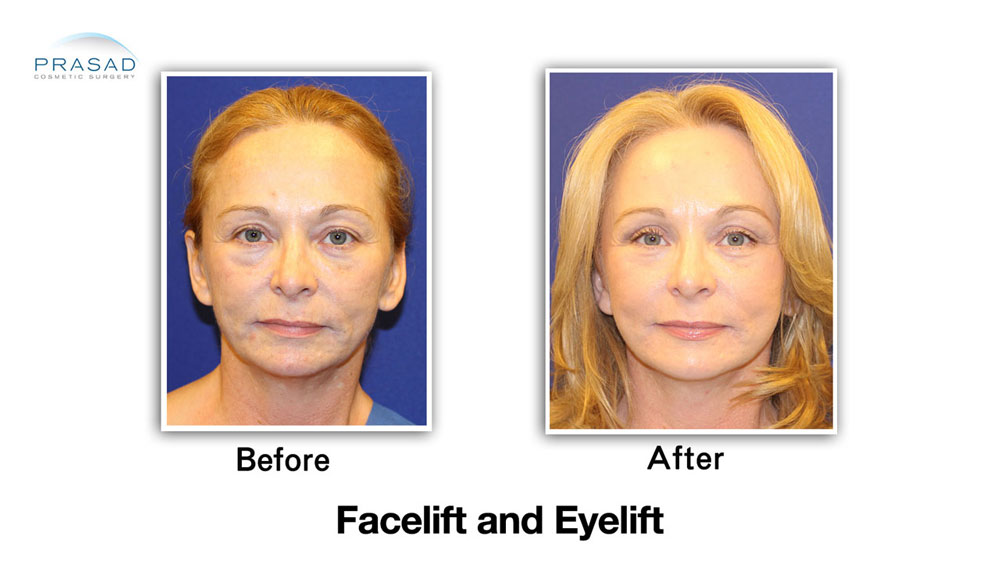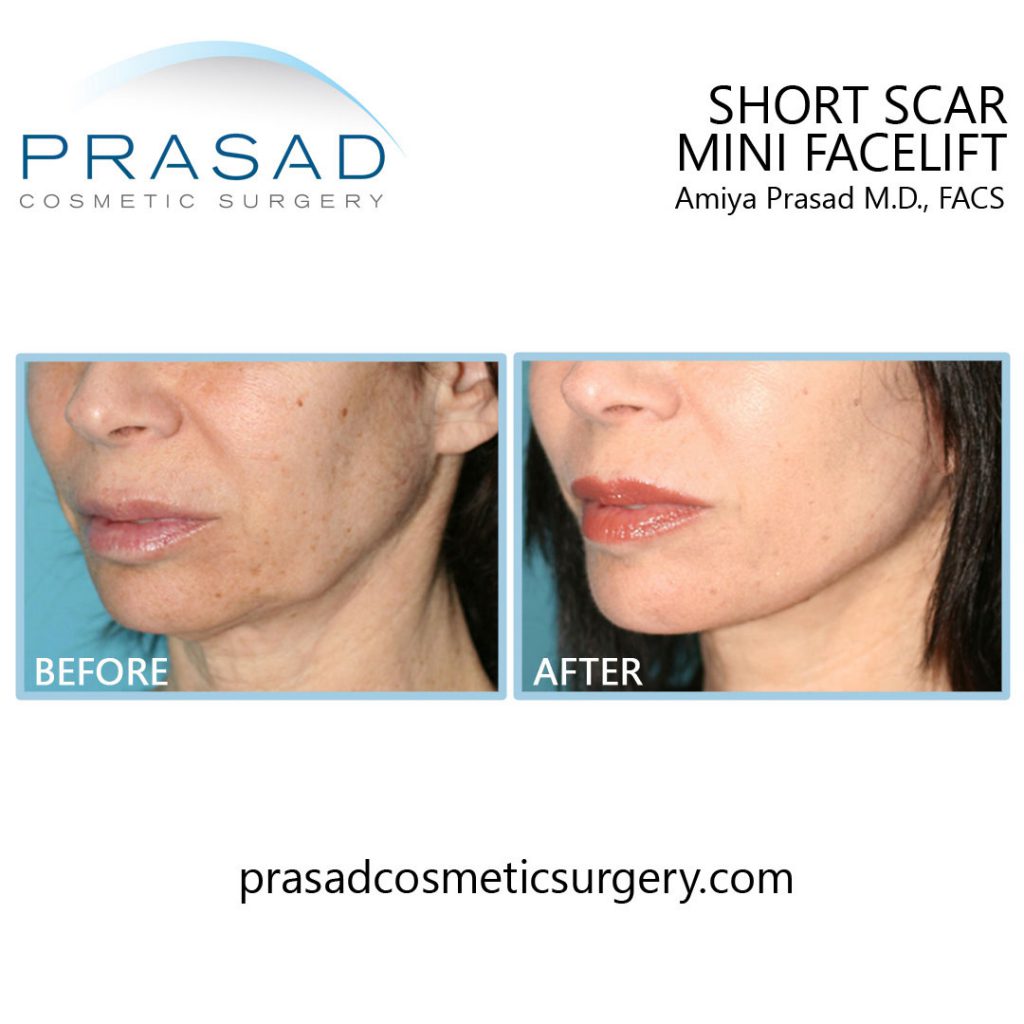A facelift is one of the biggest investments you can make to enhance your appearance. Facelifts are often performed in operating rooms by a team of professionals, in addition to the surgeon over the course of several hours by specialty-trained specialists. With so much time, effort, and money invested in a facelift, why are some people dissatisfied with their appearance following the procedure? I’ll discuss what kind of results should be expected from a facelift, as well as the facial aging issues that a facelift alone does not address.
I routinely perform all types of facelifts, from short scar mini lifts, to more extensive deep plane, and sub SMAS facelifts. For those with advanced facial aging, I frequently perform a combination of face and neck lifting. Since facial aging also affects the appearance of our eyes, I often perform eye rejuvenation such as upper and lower eyelid surgery.
Facelift Before and After


Mini Facelift Results




How a Facelift Works


How Aging Changes the Face

The descent of skin and soft tissue, which are addressed by facelift surgery, are two major contributors in facial aging. The other major aspect of facial aging is volume loss at the bone and soft tissue levels. The fullness and projection of the cheeks, the jawline definition, and overall facial harmony found in younger persons all contribute to youthful facial volume. Many facelift patients claim that they are pleased with their results in the first few months after surgery, but that their facelift no longer looks as nice after a year. This is a common misperception because transient swelling during the early healing stage can give the appearance of youthful volume. This temporary fullness fades as the healing process advances.
How to Improve Facelift Results by Addressing Facial Volume Loss
As a surgeon I have used 2 strategies in the past to help my patients. One was to place facial implants made of silicone such as cheek and chin implants at the bone level. The other was to harvest fat and perform fat grafting. Patients often resisted having facial implants in fear of looking overdone. They were generally willing to have a small chin implant, but objected to having cheek implants.
Cheek and Chin Implants


Fat Grafting
I also tried to enhance the facial soft tissue loss with fat grafting. This involved my performing liposuction to harvest fatty tissue, and placing the fatty tissue into areas of facial volume deficiency. Unfortunately, the fat survival rate was too unpredictable, and patients required further surgery to try to recover the volume lost during the first surgery. Furthermore, older skin is thinner and weaker than younger skin, so the skin, whether with fat or filler, has a limited weight-bearing capacity.




Structural Volumizing


I can be considerably more accurate with volume and shape by performing Structural Volumizing or Y-Lift, allowing me to make micro adjustments for asymmetric features. Unlike a face implant which requires extra surgery, if I need to reverse the filler placement I can use the enzyme hyaluronidase in my exam room to dissolve the filler completely.
I commonly use Structural Volumizing for clients who wish to look better after having a facelift performed by another surgeon. These patients often feel relieved to find that they do not require another facelift and are astounded by how beautiful they look in less than 30 minutes in my exam room.


Conclusion
Facelift Surgery Manhattan NYC and Long Island, New York
Dr Amiya Prasad is a Board-certified cosmetic surgeon and Fellowship-trained oculofacial plastic & reconstructive surgeon. He’s been in practice in New York City and Long Island for over 25 years. To schedule a consultation, fill out the contact form below, or you may call any of our offices at (212) 265-8877 for Manhattan, New York City; (516) 742-4636 for Garden City, Long Island; or (703) 356-1336 for Vienna, Virginia.
